Site Links
Howdy, Stranger!
It looks like you're new here. If you want to get involved, click one of these buttons!
Quick Links
Categories
In this Discussion
Who's Online (0)
Hamornic injector testing
Mentioned in the IEC baffle thread, this free software solution allows one to inject any specific quantity of harmonic distortion to any recording, processed through Audactity.
https://www.softpedia.com/get/Multimedia/Audio/Audio-Plugins/Harmonic-Generator.shtml
The plugin is pretty straight forward, just select the audio track, adjust the desired quantity of each harmonic, and apply. For a quick test I generated a 1kHz tone, and processed through REW for spectrum analysis .
1kHz pure sine wave, just to show that REW analysis is free of harmonics.
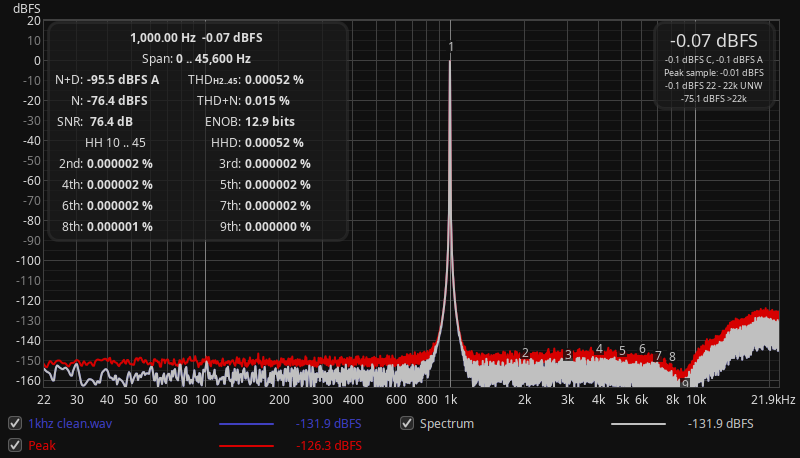
0.1% H2 added, other harmonics are still completely absent.
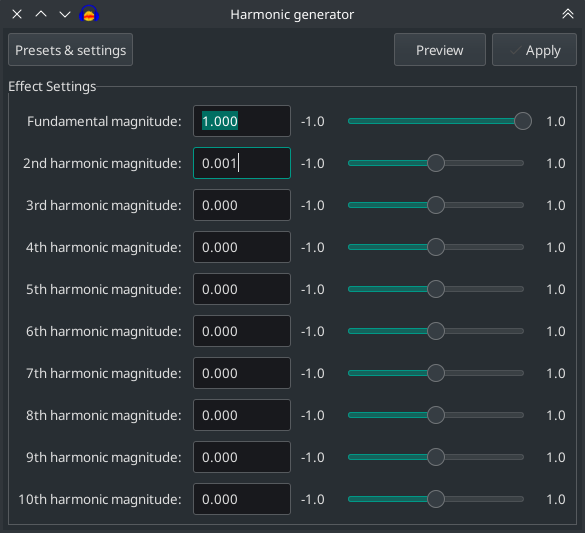
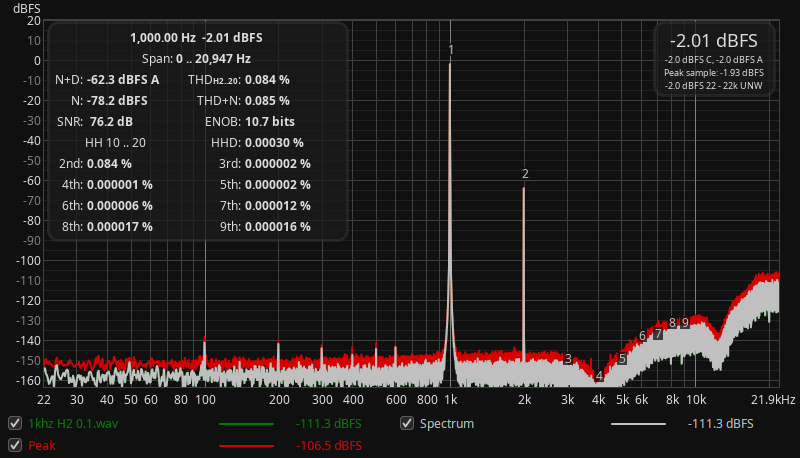
0.1% H3 added, other harmonics compeltely absent.
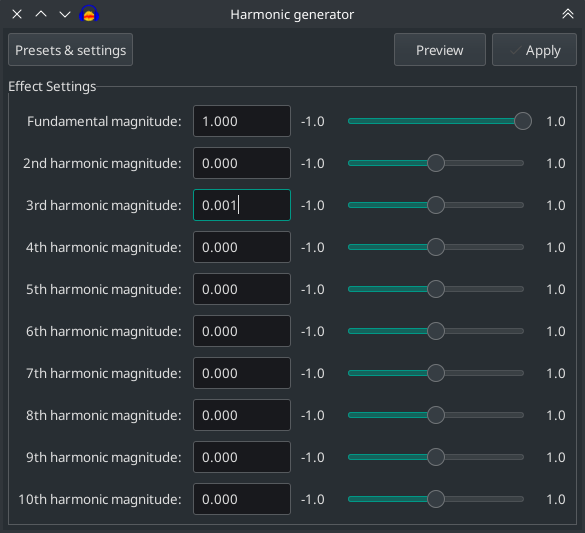
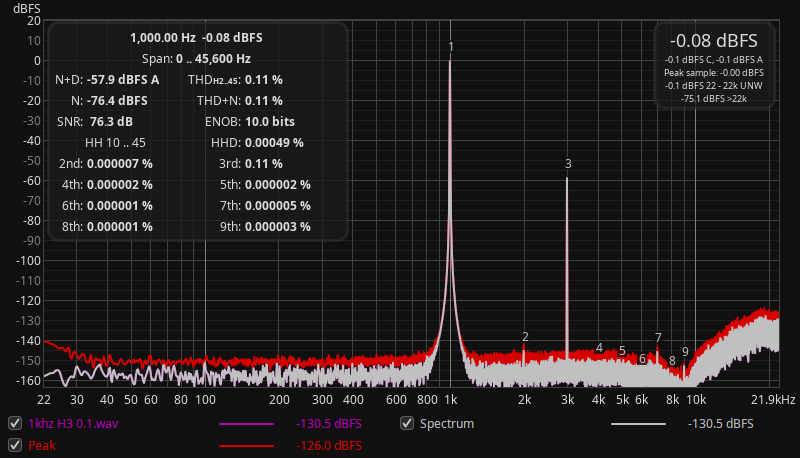
So it does what it says on the tin. Now you can add any combination of harmonics to any audio you like and hear the result first hand. Best used with the lowest distortion equipment you have available. Have fun!





Comments
Very small quantities of 0.01% are also possible. Here I did 0.1% H2, 0.01% H3, and saved 24bit file for lower noise floor. Above screenshots is 16bits 96kHz.
Thanks for posting this!! I know the other thread had brought this up regarding adding a little "tube-like" H2 to the system. But I have been doing some of the "ear-training" programs and can use this to add TOO MUCH H3, H5, etc. to better be able to recognize it.
Ear training is a great use for this. Just keep in mind that only adding purely H2 or purely H3 is a very synthetic test, real world is never like this, but useful to hear what an increase in either H2 or H3,4,5 sounds like without any other "contamination" in the source signal.
Cool. I noticed that the noise floor on your spectrum plots is extemely low. This is not a loopback test with a soundcard or amp in the circuit, so what would be the source of this residual noise? Would this be the noise floor of the software alone? Just wondering.
"open WAV" button in REW RTA for this view. Window type, FFT length and averaging method have some effect on the noise floor result, as well as physical limitations imposed by bit depth and sample rate. Here's how I set it, maybe not the perfect setting, but good enough for the purpose.

For the 30second file length I provided, this setting seems to provide lowest result for noise floor and sharpest peak for the fundamental. This file is 16bit, 96Khz with pure 10kHz sine, just under 0dBFS.
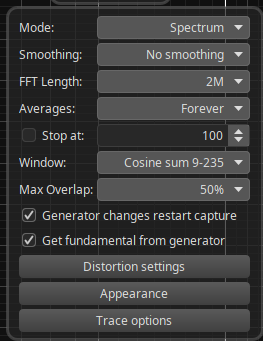
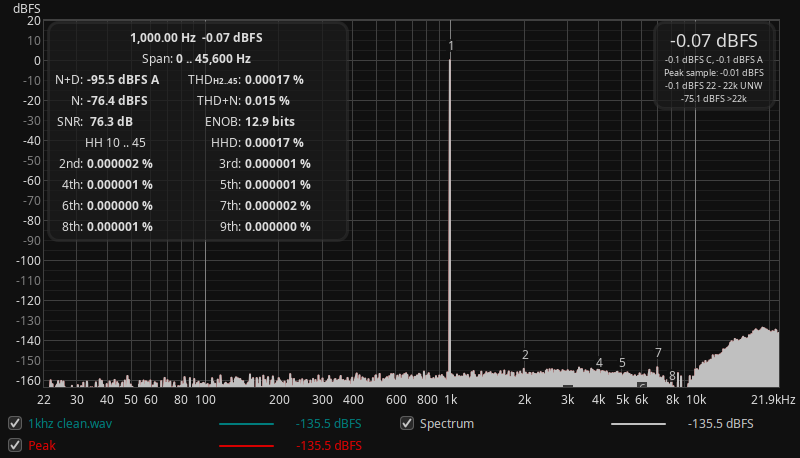
With this and some other software eg. virtual audio cable, It would be cool to simulate the midwoofer distortion in isolation, and also how a tweeter may be able to mask it.
Eg. apply HP and LP filters to a variety of music tracks, and apply the distortion only to the low passed part, and then recombine (or play both) at once.
I copied the the harmonic injector file (harmonic_gen_1220.dll) to the Audacity plugins folder, but when I start Audacity (3.42, 64 bit) it gives me an "incompatible plugin format" error. I've only used Audacity a few times so I assume it's my error.
I used it in Linux to be honest, it was already included in one of my LADSPA packages. I just assumed the above link for Windows would be functional, it seemed like the most popular location for it.
I checked in Windows, and it looks like it works with 32bit version of Audacity only. Download 32bit version, put the dll in the \Program Files (x86)\Audacity\plugins folder and rescan plugins, it should work then.
https://github.com/audacity/audacity/releases/download/Audacity-3.4.2/audacity-win-3.4.2-32bit.exe
Thanks, that did it. I briefly wondered if could be a 32 bit DLL, but assumed any new DLL would be 64 bit.
It’s not new, the dll file is dated 2006